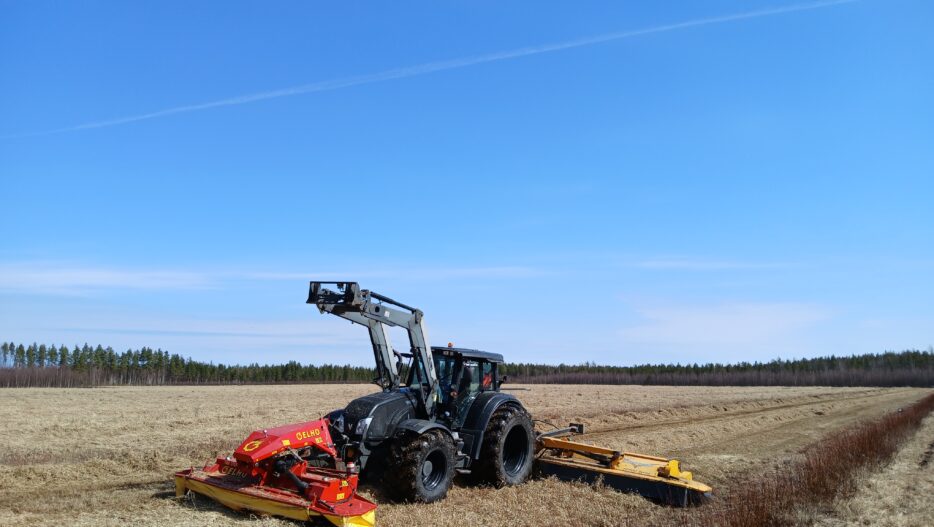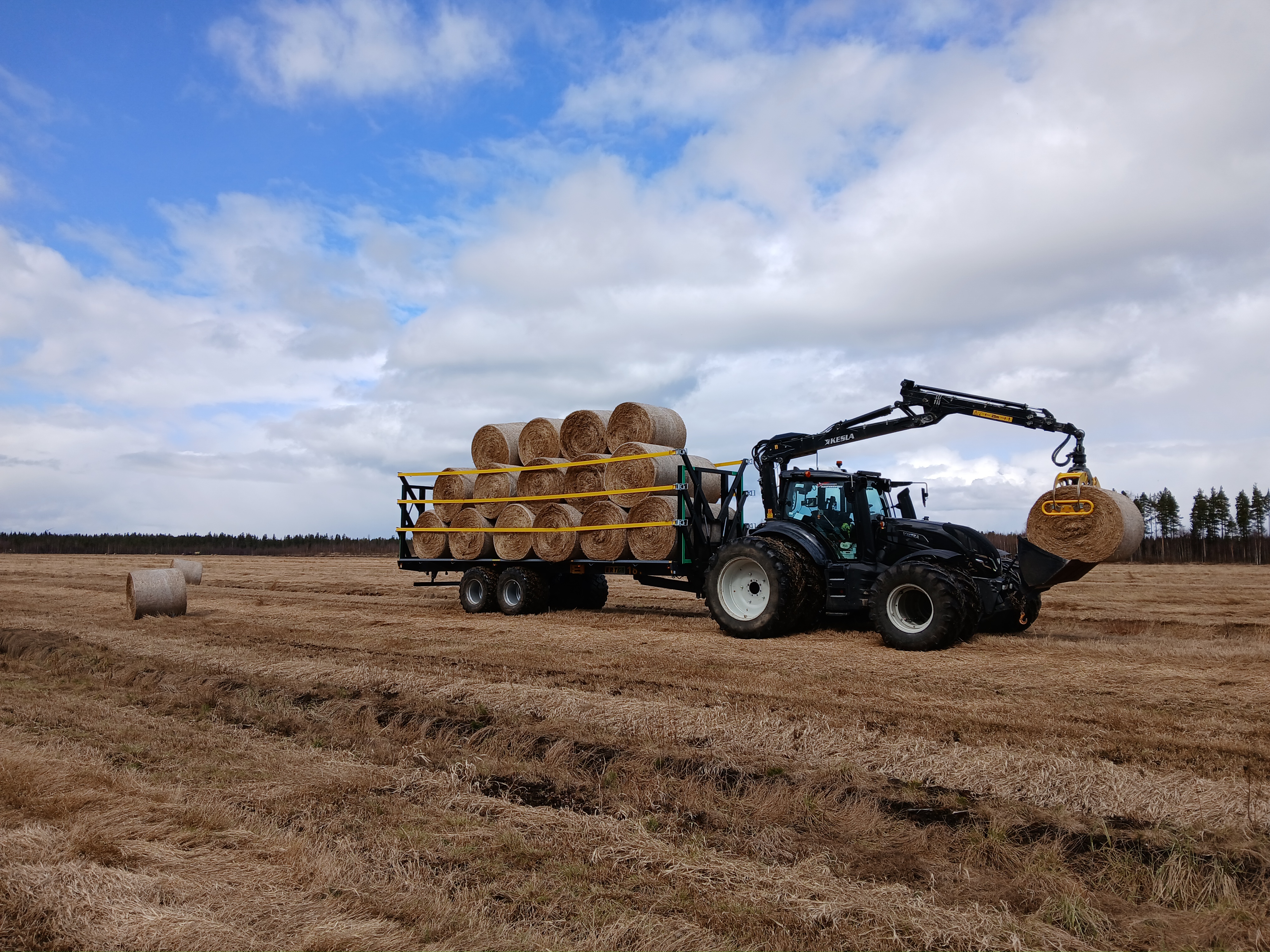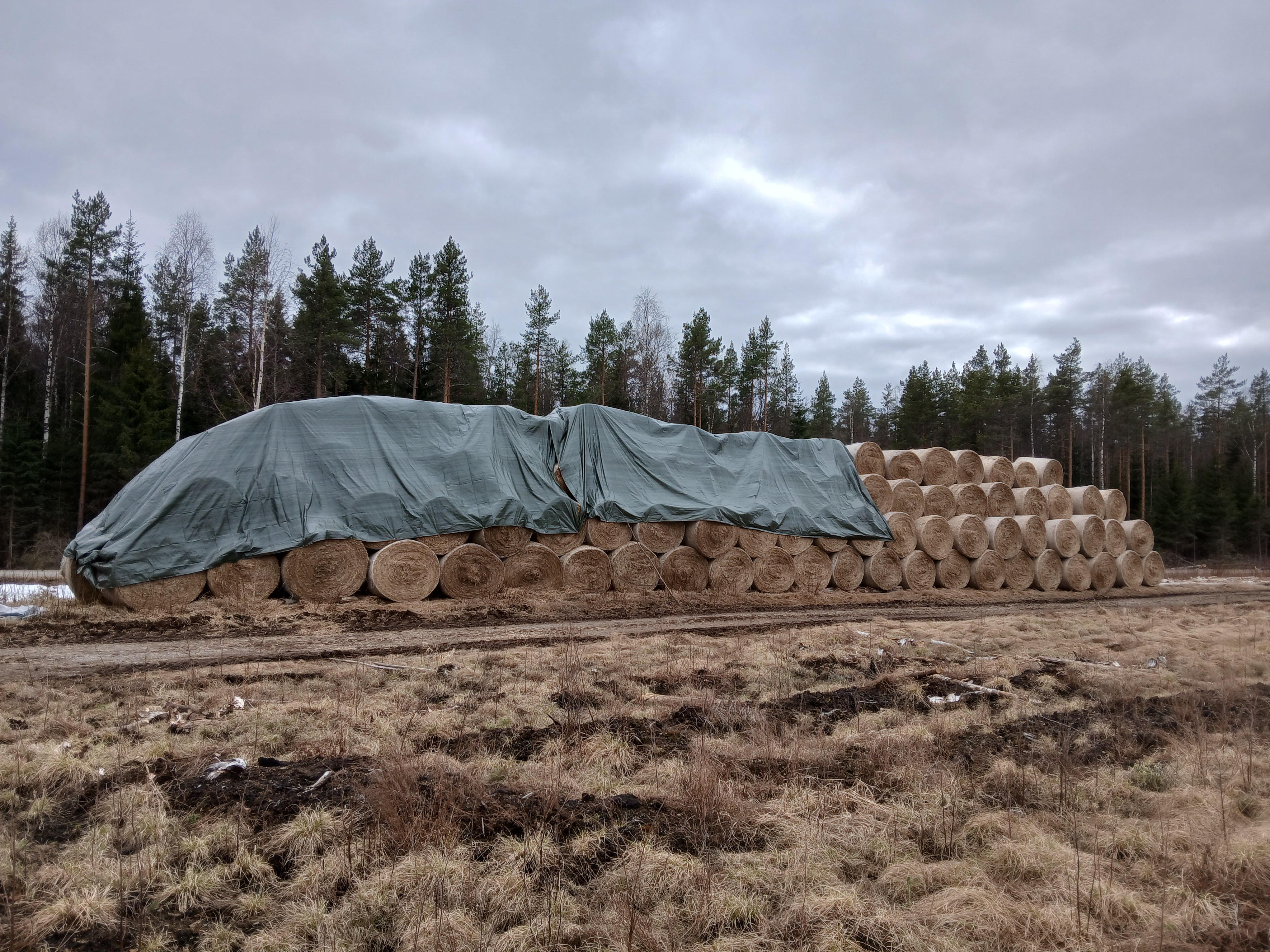
Neova started harvesting reed canary grass as a substrate material
Neova’s goal is to develop safe raw materials for home and greenhouse cultivation alongside peat. Breeding experiments have shown that Finnish reed canary grass (Phalaroides arundinacea) works well in growing media mixed with peat, and it can become a significant part of future sustainable growing media both in Finland and in export markets. The first reed canary grass fields sown in Neova’s summer 2022 harvested their first reed canary grass crops this week.
Reed canary grass is perennial, easy to care for and yielding, and it is suitable as a renewable growing medium material. One of its advantages is the ability to sequester carbon efficiently. Reed canary grass gives the first harvest two years after sowing and it produces a crop for 10 to 12 years. The yield level is about 5,000 kilograms of dry matter per hectare. Reed canary grass is ideally suited for cultivation in old peat production areas that have been discontinued.
At Kivi and Porkanneva in Kärsämäki, the first areas under reed canary grass were harvested this week. A total area of about 80 hectares will be harvested this spring. The areas were sown in the summer of 2022 and now it was the first spring harvest. After that, the crop is harvested annually. Harvesting is carried out as soon as spring, when the ground is still frozen and the relative humidity of the air is lowest.
This week’s harvest was a success, despite the fact that the fields were covered with snow just a week before harvesting. Based on measurements made in field conditions, the moisture content of the bales was less than 15%. Reed canary grass is harvested using machines designed for agricultural use. First, mowing is carried out and after that the roughs are baled into round bales. The repaired bales will initially be delivered to the Parkano factory and from then mainly to the Netherlands. Reed canary grass will also be used at the Eurajoki and Parkano mills.
Reed canary grass is one of the renewable raw materials of the future in the growing media of Neova’s subsidiary Kekkilä-BVB
Reed canary grass allows growth to be better controlled through irrigation and can prevent mold growth on the surface of the pot. It increases the airiness of the substrate and, together with other renewable raw materials, makes it possible to reduce the amount of peat up to 30%. Thanks to the water permeability of reed canary grass, finer substrates can also be used in larger growing containers.
Kekkilä-BVB uses approximately 6 million cubic metres of different materials annually for growing media. Good one-quarter of this is other than peat, being composts, perlite, wood fibre, coconut fibre and other renewable materials. As the total demand for growing media grows along with population growth, new renewable raw materials are constantly being sought and developed.
Kekkilä-BVB is committed to supporting environmentally smart farming and minimizing the environmental impact of growing media. Kekkilä-BVB’s firm goal is to supplement the traditional materials used in growing media with renewable raw materials. Due to its sustainability properties, reed hell is believed to play a significant role in future growing media, especially in replacing perlite, coconut fibres and coarse peat fractions.
Kekkilä-BVB has launched an ambitious programme to double the absolute amount of renewable raw materials by 2027 from 2021. Based on the life cycle analysis, reed canary grass is a very responsible and sustainable raw material for future growing media.
Neova is increasing the area under reed canary grass cultivation considerably. In spring 2025, harvesting will already be carried out on an area of approximately 800 hectares, and according to plans, in spring 2026 already on an area of 1,700–1,800 hectares.
More information: Ahti Martikainen, Director, Communications and Public Affairs, Neova, tel. +358 40 680 4723

